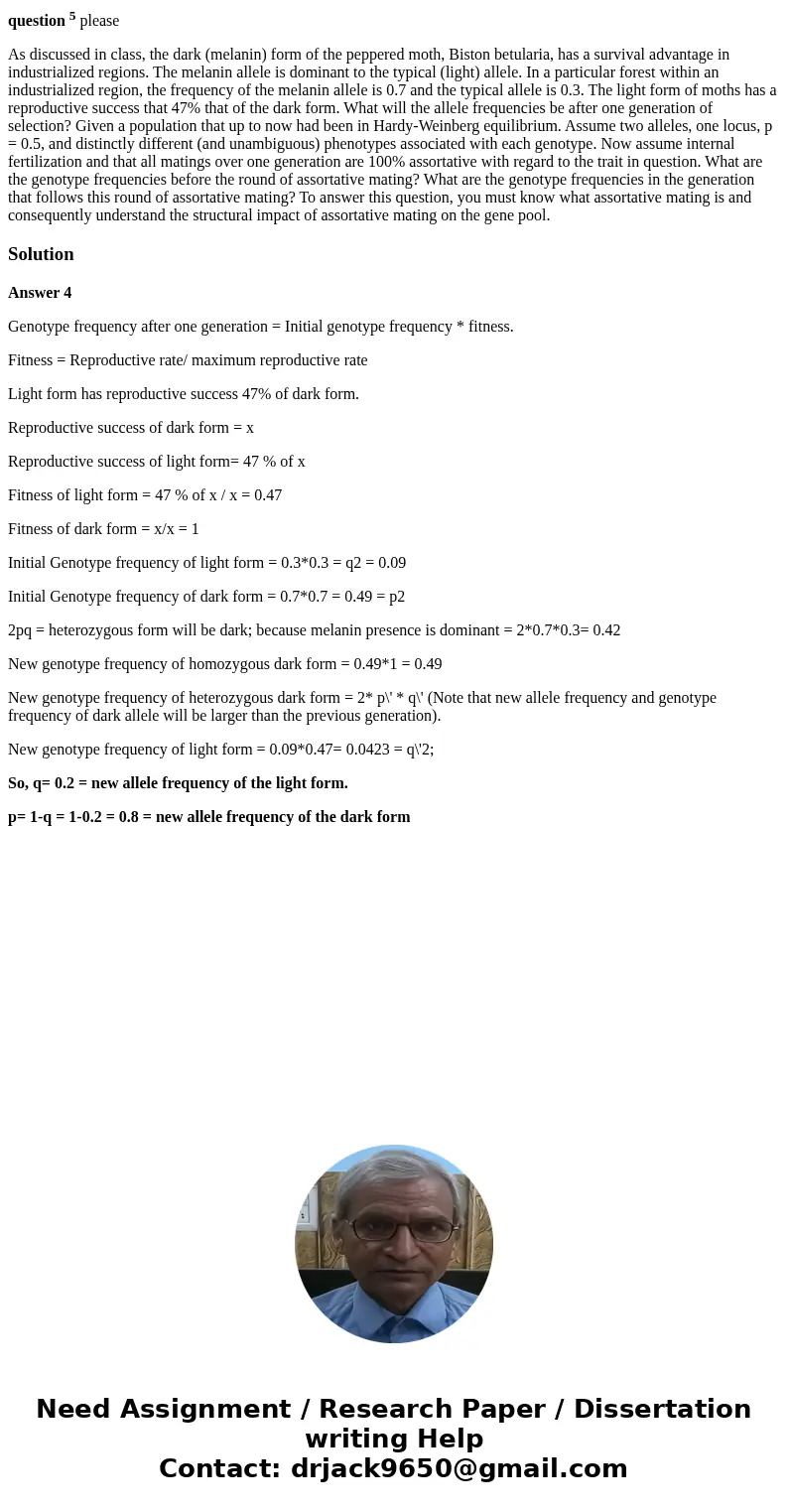question 5 please As discussed in class the dark melanin for
question 5 please
As discussed in class, the dark (melanin) form of the peppered moth, Biston betularia, has a survival advantage in industrialized regions. The melanin allele is dominant to the typical (light) allele. In a particular forest within an industrialized region, the frequency of the melanin allele is 0.7 and the typical allele is 0.3. The light form of moths has a reproductive success that 47% that of the dark form. What will the allele frequencies be after one generation of selection? Given a population that up to now had been in Hardy-Weinberg equilibrium. Assume two alleles, one locus, p = 0.5, and distinctly different (and unambiguous) phenotypes associated with each genotype. Now assume internal fertilization and that all matings over one generation are 100% assortative with regard to the trait in question. What are the genotype frequencies before the round of assortative mating? What are the genotype frequencies in the generation that follows this round of assortative mating? To answer this question, you must know what assortative mating is and consequently understand the structural impact of assortative mating on the gene pool.Solution
Answer 4
Genotype frequency after one generation = Initial genotype frequency * fitness.
Fitness = Reproductive rate/ maximum reproductive rate
Light form has reproductive success 47% of dark form.
Reproductive success of dark form = x
Reproductive success of light form= 47 % of x
Fitness of light form = 47 % of x / x = 0.47
Fitness of dark form = x/x = 1
Initial Genotype frequency of light form = 0.3*0.3 = q2 = 0.09
Initial Genotype frequency of dark form = 0.7*0.7 = 0.49 = p2
2pq = heterozygous form will be dark; because melanin presence is dominant = 2*0.7*0.3= 0.42
New genotype frequency of homozygous dark form = 0.49*1 = 0.49
New genotype frequency of heterozygous dark form = 2* p\' * q\' (Note that new allele frequency and genotype frequency of dark allele will be larger than the previous generation).
New genotype frequency of light form = 0.09*0.47= 0.0423 = q\'2;
So, q= 0.2 = new allele frequency of the light form.
p= 1-q = 1-0.2 = 0.8 = new allele frequency of the dark form

 Homework Sourse
Homework Sourse